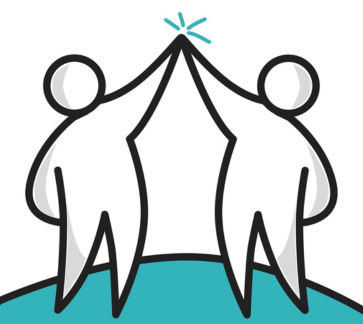 You can learn a lot about business from a dunk tank. You may have seen dunk tanks at fairs or fundraising events. They feature a large tank of water, where someone sits above the usually cold water on a hinged plank.
You can learn a lot about business from a dunk tank. You may have seen dunk tanks at fairs or fundraising events. They feature a large tank of water, where someone sits above the usually cold water on a hinged plank.
It’s all part of a game where people pay for the right to throw a ball at a target. If they hit the target, a mechanism in the dunk tank activates that flips the seat down, which plunges its occupant into the water. People love to see the moments of cause and effect that makes someone awkwardly fall into water.
As a former, minor, local TV News celebrity, I’ve had a chance to sit in a few dunk tanks. From those experiences, I’ve realized that businesses can learn a lot about strategy, promotion, and customer satisfaction. Here are a few takeaways:
Get Noticed
It’s rare that a dunk tank is the only activity at an event. You need to make sure that people will choose to spend some of their time with you. People have options and just because you’re doing something cool and fun, doesn’t mean they’ll seek you out.
As a news person, I could use the airwaves to promote an appearance. Today, I’d probably also use my social networks to put out a plea for support. In both cases, it would be important to not just say that I was going to be in a dunk tank but to also mention the charitable importance of supporting the activity. This is where you can share a personal connection.
At the event, there would likely be people who didn’t know me. For them, I’d wear a sign or a special t-shirt that promoted my appearance later in the day at the dunk tank. You could have it say something like, “See if my hair care products can survive the dunk tank at 12:30 p.m.”
Even the best products need promotion.
Put on a Show
If you choose to sit in a dunk tank, then you need to add some theater to the activity. Calmly sitting in the tank doesn’t make people excited to spend money to dunk you.
You need to playfully taunt the crowd, act upset when you hit the water, and encourage people to try again. All of these things will help the bottom line of sales.
In terms of customer acquisition, you want the crowd to go from thinking that someone will dunk you, to saying, “I want to be the one who dunks that person.”
Maybe you make a special offer to the 25th person who pays to try to dunk you or enter all participants into a drawing for a prize that your provide. It’s an extra incentive to get the crowd to take action and not just watch the proceedings.
A good product is not enough to connect with buyers. You need to tell them why they want and need it.
Bend the Rules
Sometimes people don’t have the ability to dunk you. Either the target is too far away for them to hit or they don’t throw with enough velocity. This creates frustration, which other people don’t want to experience. Thus, your sales will dry up.
When you’re in a dunk tank, the point is not to stay dry. The point is to give the other person an experience. You must make sure that people know that success is possible.
This means that sometimes you let them dunk you, whether it’s letting them throw at the target from one foot away or just let them hit the lever with their hand.
Some might say that the rules should not be bent, that dunking is possible, and if you want to achieve it, then you should buy more tickets. That’s a shortsighted mistake.
What does breaking a rule cost the person in the dunk tank? Not much as there was an expectation of being wet. Once you’re wet, you can’t really get more wet. For the person who dunked you, being able to break a rule gives them a sense of satisfaction.
That will help you sell more tickets, rather than a strict policy. Allow people the chance to celebrate success with others. This can especially work well with those who you might not expect to succeed, like small children.
If you offer your customers an experience, make sure they have the ability to achieve it.





